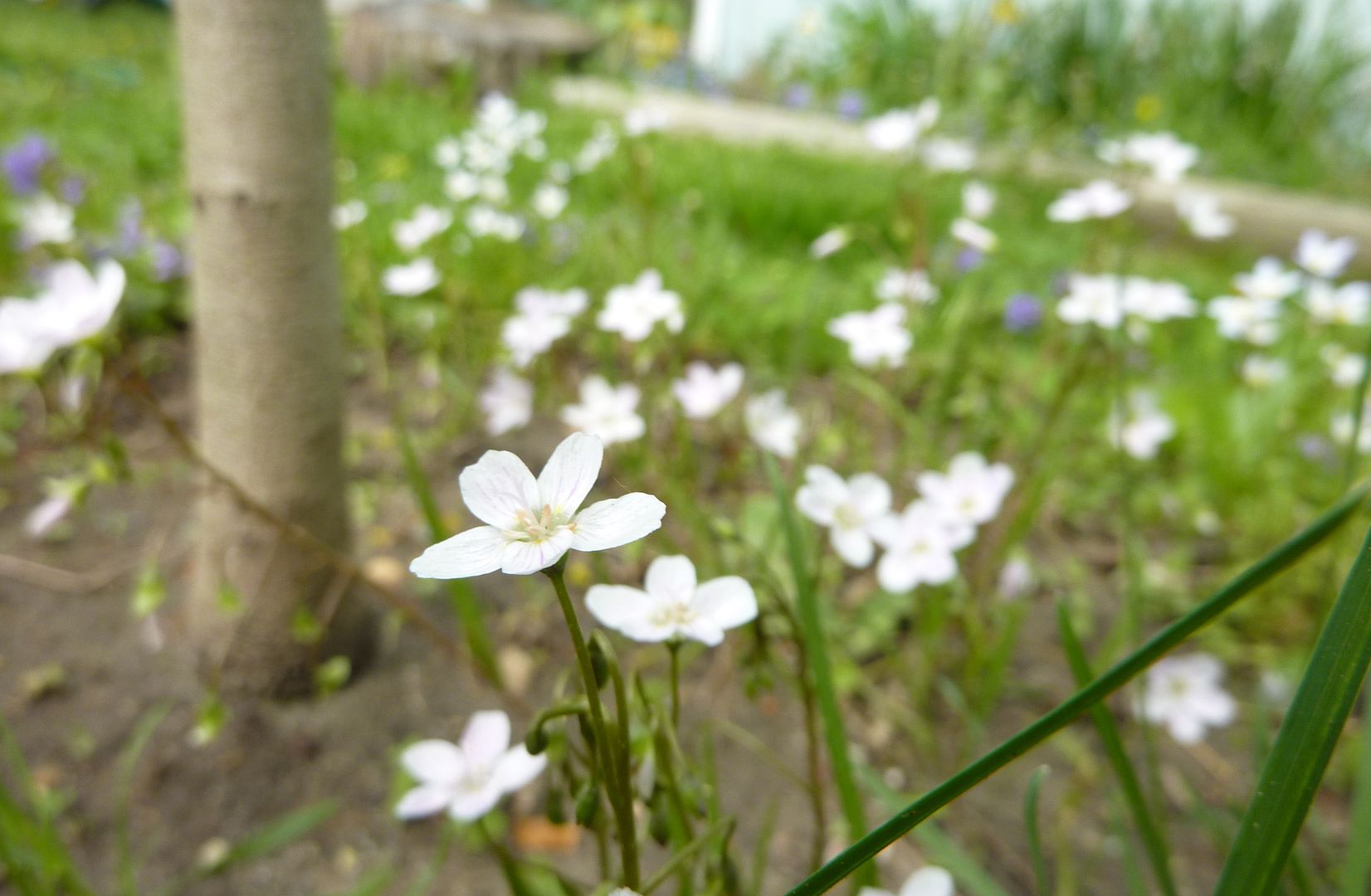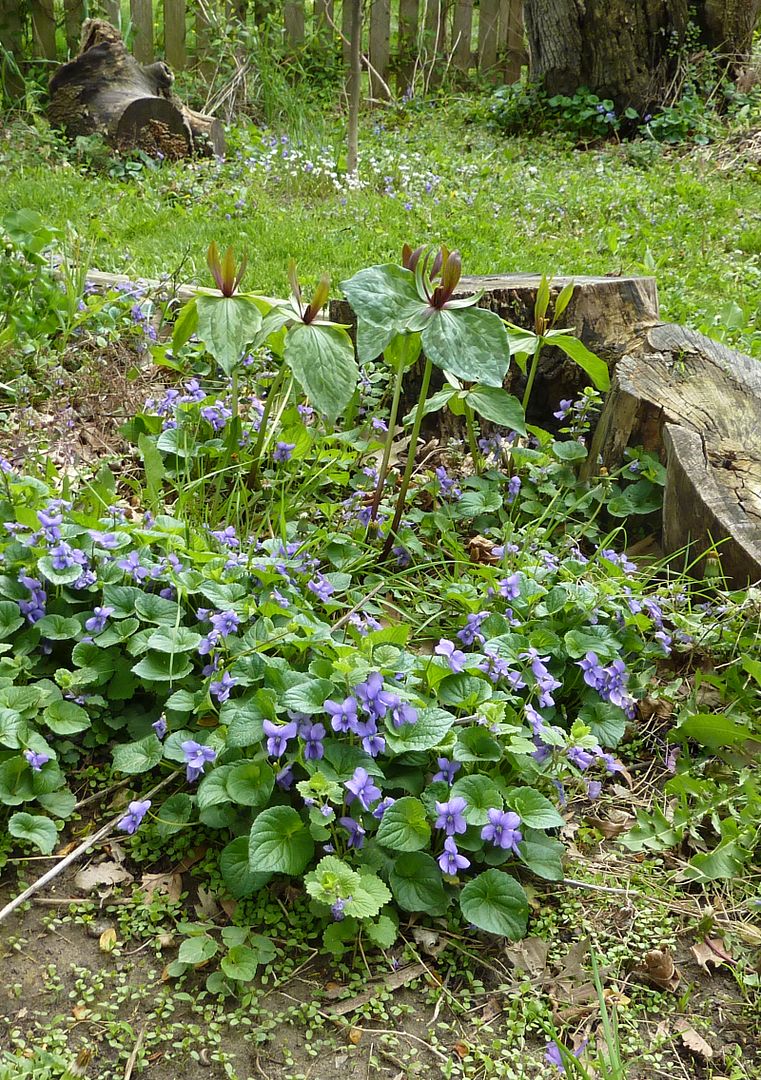I have to say I'm particularly proud of the spring garden this year. So I've decided to discuss the plants here in this photo with some detail. Pictured here in the front are clumps of Viola sororia cf. It's seeds are distributed by ants, but as you can see from all the sprouting seedlings all around, they have no trouble spreading otherwise. They're the host plant to the Diana Fritillary,
Speyeria diana, which is pretty butterfly found in the southern Appalachian mountains. The female is a mimic of the Pipevine swallowtail, both are black butterflies with the rear wings trimmed in cyan blue. Now it's worth noting that Pipevine is a recent addition to my garden, not pictured here, but I found a black butterfly with cyan blue trim flying about recently, and I wasn't able to get an ID. It will be neat to figure out which one that is.It's way more likely that I saw a true Pipevine swallowtail,
Battus philenor, as I'm just outside of the Diana Fritillary's range.
While we're on the topic of Pipevine real fast, I've stumbled upon something of a mystery. On
another blog we have a photo of ants covering the elaiosome covered seeds to Aristolochia serpentaria, Virginia Snakeroot. Supposedly though ant dispersal of seeds in this plant is inconsistent. Apparently the elaiosome often dries up, (or perhaps ants of an inappropriate size are making off with the stuff without the seeds) and the true disperser of the seed is unclear. I may have to add this cousin of the Pipevine to my garden and see what the case may be. In the mean time I'll keep an eye on all of my plants should they decide to flower this year.
Next up we have the Trilliums, which are probably the best example of
myrmecochory. I did a video on it last year and will probably do another later this year. I have so many Trillium flowers I can't wait to see how many pods I'll get to mess around with.
 |
| Claytonia virginica |
Lastly we have a patch of Spring Beauty. This isn't my favorite plant for lots of reasons. Not the least of which being it has almost nothing to do with ants. The only ant related thing to mention about this flower is that flower stems are thin on purpose to discourage ants from walking up to the flower and stealing all the nectar. From
The Secrets of Wildflowers: A Delightful Feast of Little-Known Facts, Folklore, and History
by Jack Sanders we find more interesting facts though. For one the corm is edible and said to be delicious. Pinker members of the species are more likely to be pollinated by bumblebees than the whiter flowering forms. As a result white flowers get more attention where blooming and colder weather over lap, and are pollinated more by flies than bees.

